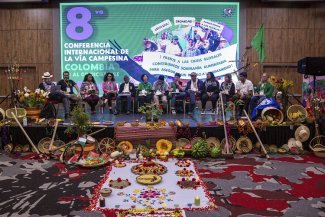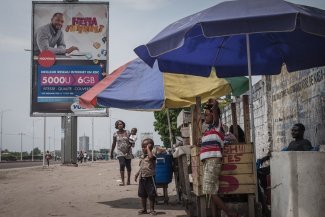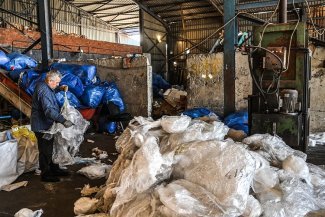With less than 1000 days left to meet the UN Millennium Development Goals (MDGs), a new report reveals that the African countries making the best progress to eradicate extreme poverty are, on average, the ones spending the most on agriculture, health and education.
The 2013 DATA Report: Financing the Fight for Africa’s Transformation was published on Wednesday by One Campaign, the advocacy organisation co-founded by Bono of the Irish rock band U2.
It ranks sub-Saharan African governments on the progress they have made in those three key areas in the fight against poverty.
The report finds that “in the last three years, thirty countries in sub-Saharan Africa have accelerated progress towards reaching the MDGs, and sixteen are well on track to halve extreme poverty by 2015.
“Generally speaking, since 2010, forty-nine African poor countries have improved their overall MDG score, seventeen have worsened it and ten have stayed the same.”
The report also identifies a group of “trailblazers”, countries which have recorded significant progress in this area.
Of 45 “trailblazers” 10 are in sub-Saharan Africa; these countries include Benin, Ethiopia, Ghana and Malawi.
Research found that these MDG ‘trailblazers’ allocate an average of 39 per cent of government spending to education, health and agriculture, while ‘laggards’ such as Nigeria and the Democratic Republic of Congo allocate, on average, only 29 per cent.
The study is published just days after the news that Brazil is ready to cancel 700 million euros worth of African debt, thus strengthening ties with emerging African economies.
Brazilian president Dilma Rousseff announced the move while visiting the Ethiopian capital to mark the fiftieth anniversary of the African Union in Addis Ababa.
The Ethiopian example
The report singles out Ethiopia as a good example of how things can improve if governments decide to allocate a significant proportion of their budget to development aid in these three sectors.
From 2000 to 2011, the Ethiopian government has spent nearly 45 per cent of its budget in these areas. As a result, extreme poverty fell from 61 per cent in 1995 to 31 per cent in 2011, changing the lives of ten million people.
“This report shows that when developing countries focus on improving health, agriculture, and education, amazing things can happen,” says Eloise Todd, Director of One’s Brussels office.
“But donors still have a crucial role to play at this make or break moment for the MDGs,” she added.
Todd also stressed the importance of the role played by the European Union, the world’s biggest donor bloc, especially as it is about to decide how to spend its next seven-year aid budget.
“If it prioritises the poorest countries and supports targeted and accountable programmes in health, agriculture and education, the results could be truly transformational.”
During a European Council development meeting in Brussels on 28 May, EU ministers reiterated their promises on EU Official Development Assistance (ODA).
In 2005, the EU committed itself to spending 0.7 per cent of its collective gross national income (GNI) on development aid by 2015, making a significant contribution to the MDGs.
And yet, in 2012, EU collective ODA decreased from 56.2 billion euros to 55.2 billion euros, or from 0.45 per cent to 0.43 per cent of EU GNI.
Development ministers have also laid down the basis for a common EU position on the post-2015 agenda, which will replace the MDGs.
On 30 and 31 May, a 27-member commission – appointed by the UN Secretary General Ban Ki-Moon and co-chaired by the Indonesian President Susilo Bambang Yudhoyono, Liberian President Ellen Johnson Sirleaf, and UK Prime Minister David Cameron – will present a report on its post-MDG roadmap in New York.
The post-2015 agenda will then be discussed in the UN General Assembly in September 2013.









